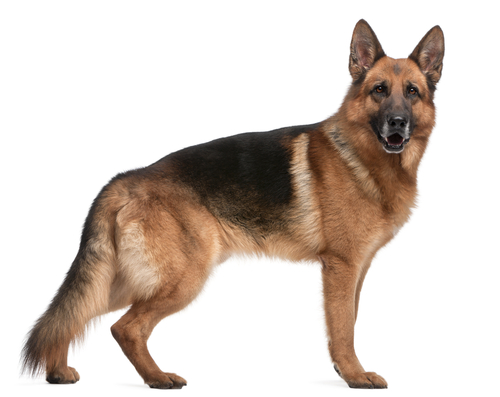
Ask A Vet: What Is Hip Dysplasia?
Hip Dysplasia is a term that we are all somewhat familiar with, but do you really know what it is? It is an important source of pain for our dogs. Affected dogs often act stiff or sore on their rear legs. They may have difficulty rising or walking on slick surfaces. They may also resist jumping onto furniture or into vehicles as the disease progresses. Sometimes, dogs are so brave that they hide their pain from hip dysplasia completely, but that does not mean that it doesn’t hurt.

The hip joint is made up of a ball and socket. Ball and socket joints typically allow rotary movement in every direction within reason. The ball (the femoral head) fits into the rounded cuplike socket (acetabulum) and when the hip moves, the ball rolls around inside the bounds of the socket. This set up allows for a good range of movement…when all is well.
Hip dysplasia is a term that applies to malformation of the components of the joint. The malformations lead to instability of the joint itself. There can be abnormalities in the either the ball or the socket (or both). A loose joint in which the components lack symmetry produces abnormal wear. Think about how the soles of your shoes wear in odd places if you walk without perfect symmetry. The abnormal wear eventually leads to significant osteoarthritis in affected dogs.
There is a strong genetic correlation for hip dysplasia in certain breeds, including many large breed dogs. Awareness of the disease has promoted changes in breeding programs worldwide and a study in New Zealand found that the German Shepherd Dog has shown statistical improvement in the breed for the prevalence of dysplasia.¹ Other breeds are making changes to try to eliminate this debilitating disease.
Because this is a painful disorder that is genetic in origin, testing and responsible breeding practices are our only way to reduce the occurrence in our dogs. The signs in affected dogs can be reduced and managed, but most cases require lifelong management. You should be aware of hip dysplasia risk for any large breed dog and ask if you choose a purebred large breed dog, ask educated questions and do your research prior to making a purchase.
Mixed breed dogs are certainly also affected by this disorder, but as always, it is much better to adopt than to shop. Statistical chances of hip dysplasia are reduced if you choose a dog of mixed lineage and saving a life is best for many other reasons. If you think that your dog may be suffering from hip dysplasia, ask your vet what is available to help.

+ There are no comments
Add yours